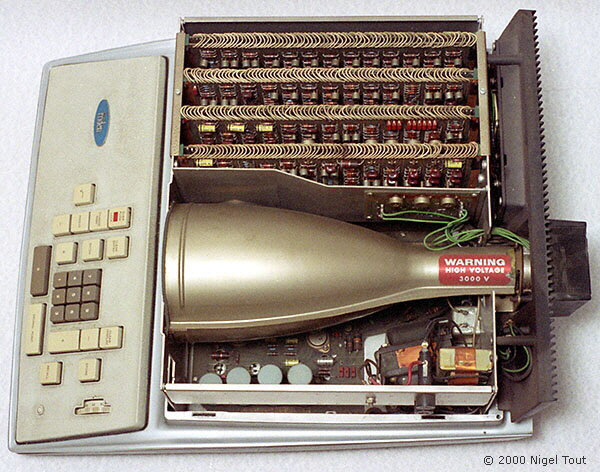
We used a marchant rotary calculator in the 1930's and 1940's to determine the value of a truck load of tomatoes in the family tomato canning factory. The answer was available instantly in the rotary numbers in the carriage. The carriage at the top of the calculator would step over for multiple addition or subtraction. No counting cycles for multiplication or division. Location Currently not on view Credit Line Gift of The Singer Company, Friden Division 1964 ID Number CI.334377 catalog number 334377 accession number 313935 Object Name electronic calculator Physical Description plastic (overall material) metal (overall material) Measurements overall: 26 cm x 46."Friden and Marchant Rotary Calculator were fast and easy to operate. An extensive discussion of the development of the Friden 130 is at the Old Calculators Web Museum.

Mathematics for the Space Age: The Totally New Friden 130 Electronic Calculator, undated advertising booklet. Smith, “Electronic Calculators Gaining,” New York Times, August 7, 1965, p. Friden soon introduced the 132 electronic calculator, which took square roots. Within a year, the price was down to $1,695. In August of 1964, the Friden 130 electronic calculator went on the market, selling for $2,150. In 1963 Friden was acquired by Singer Company. The Friden Calculating Machine Company began manufacturing mechanical calculating machines in California in the 1930s. A mark on the bottom at the front reads: MODEL 1. A mark on the front next to the display reads: 130 ELECTRONIC CALCULATOR. Tags on the front and on the back of the machine read: Friden. The bottom line of the display shows the answers, and numeric entries as they are entered. If the numbers are smaller, the digits to the left are zeroes. Behind the keyboard is a cathode ray tube display that shows four rows of numbers. This way of representing arithmetic operations is known as reverse Polish notation, and would be used on several electronic calculators. In entering arithmetic operations into the calculator, one first keys in a number, then pushes the enter key, then keys in the second number, and then pushes the key for the operator (e.g. A decimal point selector dial is on the right. In addition to keys for the four arithmetic operations, it has change sign, enter, repeat, clear entry, clear all, store, recall, and overflow lock keys. The hefty instrument has an array of nine square plastic digit keys, with a zero bar and a decimal point bar below these.



Description This is one of the first fully transistorized electronic calculators. Eliot Elisofon Photographic Archives, African Art.


 0 kommentar(er)
0 kommentar(er)
